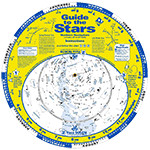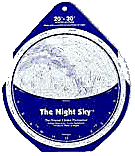|
1
|
First Quarter Moon at 12:40 UT.
|
|
1
|
Moon at apogee (farthest from Earth) at 21h UT (distance 404,161km; angular size 29.6').
|
|
4
|
Moon near Antares at 0h UT (evening sky). Occultation visible from Antarctica, southern Argentina, southern Chile and Falkland Islands.
• Lunar occultation of Antares (In-The-Sky)
|
|
5
|
Venus at northernmost declination (22.0°) at 8h UT. Mag. −4.0.
|
|
7
|
Asteroid 2 Pallas at opposition at 13h UT. Mag. 9.4.
• Pallas (Wikipedia)
|
|
9
|
Full Moon at 7:56 UT.
|
|
12
|
Perseid meteor shower peaks at 0h UT. Peak lasts about 12 hours. Active from July 14 to September 1. Produces swift, bright meteors (50-75 per hour) with persistent trains. Best viewed after midnight.
• Perseids (Wikipedia)
• Perseids (American Meteor Society)
• 2025 Meteor Shower Calendar (PDF) (International Meteor Organization) |
|
12
|
Venus 0.9° S of Jupiter at 7h UT (36° from Sun, morning sky). Mags. −4.0 and −1.9.
|
|
12
|
Moon near Saturn at 13h UT (morning sky). Mag. 0.8.
|
|
14
|
Moon at perigee (closest to Earth) at 18:04 UT (distance 369,288km; angular size 32.4').
|
|
16
|
Last Quarter Moon at 5:13 UT.
|
|
16
|
Moon near the Pleiades at 17h UT (morning sky).
|
|
19
|
Moon near M35 Cluster at 0h UT (54° from Sun, morning sky).
|
|
19
|
Mercury at westernmost elongation at 10h UT (19° from Sun, morning sky). Mag. 0.0.
|
|
19
|
Moon near Jupiter at 23h UT (morning sky). Mag. −2.0.
|
|
20
|
Moon near Castor at 7h UT (morning sky).
|
|
20
|
Moon near Pollux at 13h UT (morning sky).
|
|
20
|
Moon near Venus at 14h UT (morning sky). Mag. −4.0.
|
|
21
|
Moon near Beehive Cluster (M44) at 14h UT (morning sky).
|
|
21
|
Moon near Mercury at 20h UT (18° from Sun, morning sky). Mag. −0.4.
|
|
23
|
New Moon at 6:06 UT. Start of lunation 1270.
|
|
26
|
Moon near Mars at 15h UT (evening sky). Mag. 1.6.
|
|
27
|
Moon near Spica at 12h UT (evening sky). Occultation visible from Antarctica.
• Lunar occultation of Spica (In-The-Sky)
|
|
29
|
Moon at apogee (farthest from Earth) at 16h UT (distance 404,548km; angular size 29.5').
|
|
31
|
First Quarter Moon at 6:24 UT.
|
|
31
|
Moon near Antares at 8h UT (evening sky). Occultation visible from Antarctica, south-western New Zealand and Macquarie Island.
• Lunar occultation of Antares (In-The-Sky)
|
|
|
|
All times Universal Time (UT).
- US Eastern Daylight Time = UT − 4 hours.
- US Pacific Daylight Time = UT − 7 hours.
- Australian Eastern Standard Time = UT + 10 hours
- Singapore Standard Time = UT + 8 hours.
|







